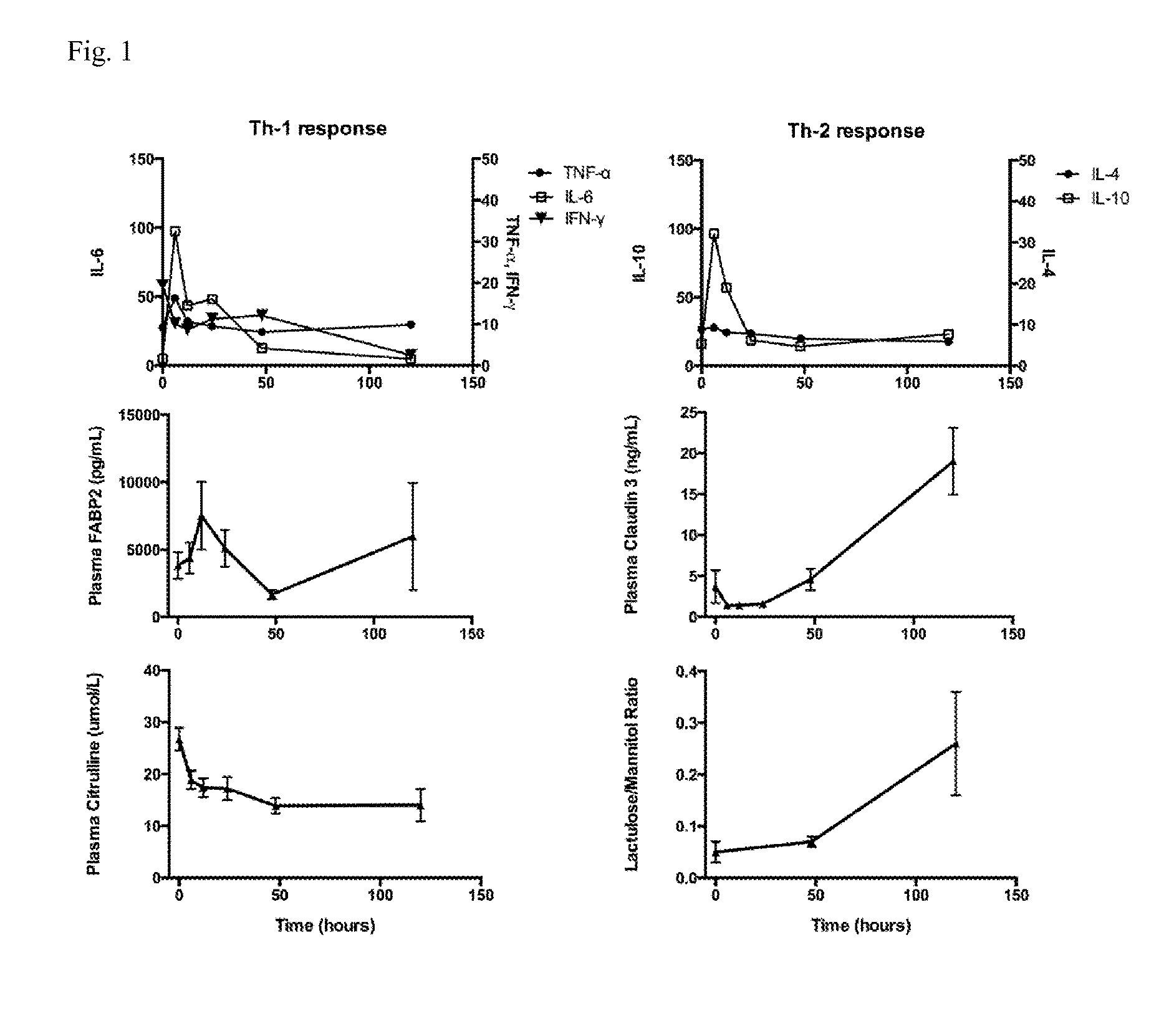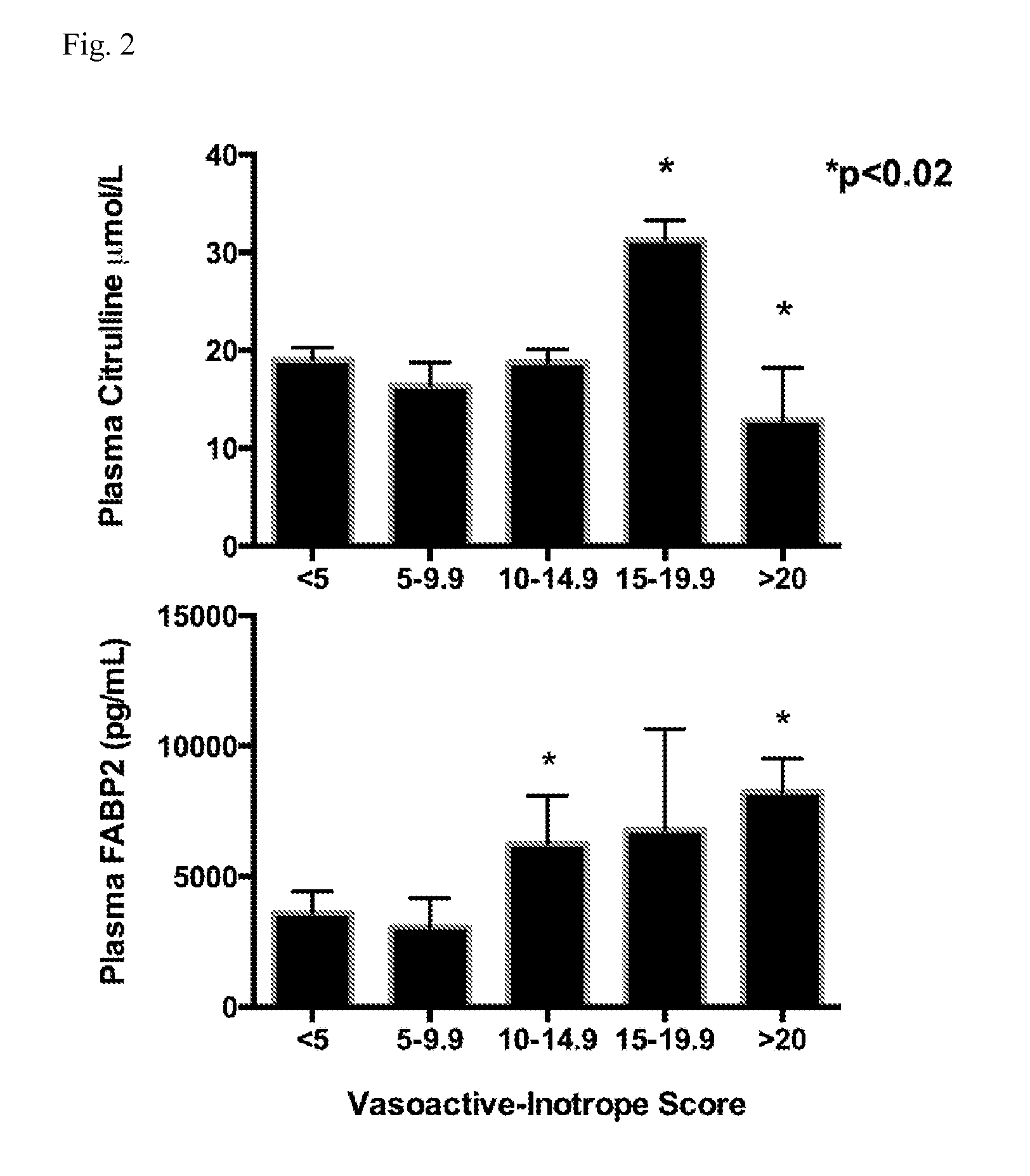Methods and materials for characterizing intestinal barrier function
a technology of intestinal barrier and function, applied in the field can solve the problems of impaired intestinal barrier function, inability to receive goal calories, and inability to obtain objective diagnostic tools to inform physician decisions, so as to improve the efficiency improve the effect of intestinal barrier function, and reduce hospital-acquired infection risk and morbidity
- Summary
- Abstract
- Description
- Claims
- Application Information
AI Technical Summary
Benefits of technology
Problems solved by technology
Method used
Image
Examples
examples
[0075]The invention now being generally described, will be more readily understood by reference to the following example, which is included merely for purposes of illustration of certain aspects and embodiments of the present invention, and are not intended to limit the invention.
example i
[0076]This example describes the materials and methods for Example II.
Patients
[0077]Parents were approached for signed written consent for all eligible children scheduled for CHD surgery in the pre-anesthesia clinic at Diamond Children's Medical Center in Tucson, Ariz. Inclusion criteria were age greater than 37 weeks corrected gestational age and a diagnosis of CHD requiring surgical repair or palliation with the use of CPB. Exclusion criteria were known pre-existing gastrointestinal dysfunction, immune dysfunction, active intracranial bleeding, and anuric renal failure. All operations were performed by two surgeons. CPB and anesthetic regimens were per usual care.
Blood Samples
[0078]Blood samples for measurement of plasma FABP2, claudin 3, and citrulline were collected from indwelling intravascular catheters pre-operatively after induction of general anesthesia, but prior to CPB, and at 6, 12, 24, 48, and ≧120 hours post-operatively. Final samples at ≧120 hours were collected betwe...
example ii
[0087]Baseline and serial post-operative plasma FABP2, citrulline, claudin 3, Th-1 and Th-2 cytokines, and DSPT were measured in 20 children undergoing repair or palliation of CHD with the use of CPB. Table 1 lists the cardiac diagnoses and operations performed. Patient demographics, cardiac bypass duration, and hospital length of stay are listed in Table 2. Creatinine clearance remained normal for all study subjects. Patients were prescribed intermittent intravenous or oral furosemide post-operatively and maintained >1 ml / kg / hour of urine output. Mean cumulative fluid balance at post-operative day 5 was −300 ml (SEM 255 ml). None of our study patients received pre-operative steroids. Perioperative antibiotic [second generation Cephalosporin (Cefuroxime)] was administered in all patients except in cases of documented penicillin allergy, or history of methicillin resistant S. aureus infection. During sample collection, blood collection occurred during steady state time periods for va...
PUM
| Property | Measurement | Unit |
|---|---|---|
| concentrations | aaaaa | aaaaa |
| concentration | aaaaa | aaaaa |
| concentration | aaaaa | aaaaa |
Abstract
Description
Claims
Application Information
 Login to View More
Login to View More - R&D
- Intellectual Property
- Life Sciences
- Materials
- Tech Scout
- Unparalleled Data Quality
- Higher Quality Content
- 60% Fewer Hallucinations
Browse by: Latest US Patents, China's latest patents, Technical Efficacy Thesaurus, Application Domain, Technology Topic, Popular Technical Reports.
© 2025 PatSnap. All rights reserved.Legal|Privacy policy|Modern Slavery Act Transparency Statement|Sitemap|About US| Contact US: help@patsnap.com



